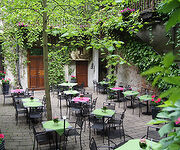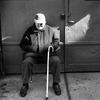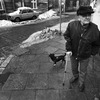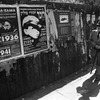Treasures from Polish Collections in Lwow
Cracow is often described as Poland's 'second city' or 'cultural capital', but for many Poles who were brought up before the war, there were other, grander cities that could easily vie for such titles. Lwow was Poland's jewel in the south east, and during the nineteenth century, it was Lwow, not Cracow, that was the capital of Habsburg Galicia.
The loss of Lwow, coupled with Wilno in the north, was amongst the many painful losses that Poland endured during the Second World War. With the acquiecence of the Great Powers, America and Britain, Stalin saw that Poland's borders were rolled West. Tens of thousands of Poles were compelled to emigrate, and Lwow became a western outpost of the Soviet Union. In 1991, the city emerged as the capital of Western Ukraine.
Pre-war Lwow has been described as something of a Polish island in a Ukrainian sea - the majority of the inhabitants of the countryside around the city were Ukrainians, (many of whom toiled for Polish noblemen). The explosive cocktail of Nazi and Soviet occupations during the war years served as a catalyst for a host of simmering resentments - in the darkest days of the war, the Ukrainians lashed out at the Poles, fearing that the close of the war would either bring about repressive rule under the Poles, or consumption by the Russians into the Soviet Empire.
In governmental affairs, Polish-Ukrainian issues relating to Lwow and the War remain highly sensitive. However, for today's emerging generations on both sides of the border, there is little bitterness to talk of, which bodes well for the future.
In a small way, the cooperation of Ukrainian Museums in Lwow with those in Poland, provides a further sign of improving relations. The current exhibition in Cracow, entitled 'Treasures of Polish Culture from the Collections of Lwow Museums' is modest in its size and location, but it nevertheless provides a glimpse of a number of Polish gems that have remained in the Ukraine since the war.
It's a curious little exhibition, including paintings, furniture, fashion and one or two eccentricities as well. And, as chance would have it, the authorities need for a low-key, uncontroversial venue has leant a delightfully surreal dimension to the show. The venue that has eventually been chosen is the small nineteenth century zoological museum, which is tucked away on a side street just east of the Old Town. Hence, a gaggle of rather bemused looking stuffed mooses and elks crown the doorway to the exhibition room, whilst a splendid eagle (again of the stuffed variety) rears up from a display amongst a host venerable nineteenth century oil-paintings. Slipping next door one finds oneself in a mock subterranean grotto, where various specimens of natural history are displayed for our enlightenment - its a gloriously Polish scenario!
The show is only a small taster of what is kept in the Lwow collections, but it is a charming taster nonetheless, and there are several jewels on display that would merit a visit for fans of the arts. The full-length 'Portrait of a Young Actress' by Jozef Mehoffer is a fine work by that towering artist of Poland's Art Nouveau, whilst Grassi's classical 'Portrait of Princess Lubomirska' provides a gem from the eighteenth century.
Alongside these works there are some marvellously random pieces such as a sleigh that was given by Catherine the Great of Russia to her Polish daughter, Countess Branicka. This extraordinary thing, which was fashioned to resemble a fearsome griffin, replete with taloned claws and splendid plumage, seems tailor-made for the terrible witch in C.S. Lewis's ' The Lion, the Witch and the Wardrobe'. (As it was, Catherine did evolve into a witch like figure for the Poles, and she was to become the driving force behind the dismemberment of Poland).
This highly peculiar exhibition has a touch of the bizarre and the comical about it, and yet it also shines a beam onto a world that has passed away forever. A handful of smiling old Polish gentlemen from Lwow attended the opening of the exhibition. Owing to the war, they had lived virtually their entire lives in exile. Classic old songs were sung and poems were read. It will not be long before there is no one left who can remember the city as it was - a cosmopolitan city that was amongst the most splendid in Europe.
('Treasures from Polish Collections in Lwow' is to be found in the Zoological Museum at ul. Sebastiana 9 until May 16th, from 9 a.m to 6 p.m)

 Kawaleria Szarza Smaku
Kawaleria Szarza Smaku
 Europejska
Europejska
 Krakow Pinball Museum
Krakow Pinball Museum






